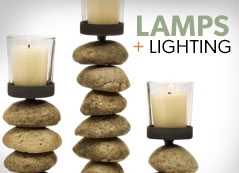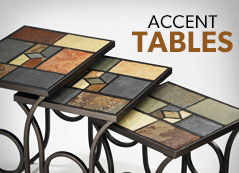
Choosing the Right File Cabinet for Your Office
If you work out of an office and collect many papers and files during your work week, you know how important a filing cabinet can be. If you have a big and well organized filing cabinet, you know what an advantage it is to have all of your important information right in a place where you can access it quickly when needed. If you do not have a filing cabinet or have one but do not use it well, then you know what a stressful nightmare it can be to try to find important information. After that description, you might be asking yourself, "What do I need to know about Filing Cabinets?"
File cabinets come in many sizes, styles, colors, and their quality ranges from poor to outstanding. Since file cabinets can last for many years, it is important to purchase a good quality cabinet that will fit your needs now and in the future. If you have a business and need to purchase a file cabinet, the cost of the file cabinet can be depreciated over seven years on your business tax return.
So what do you look for in a good filing cabinet? One of the most important items that separate good quality from bad quality is full-suspension drawers. These drawers are distinctive in that the suspension system rolls on ball-bearings and the drawers will pull all the way out so you can see all of the contents in a drawer. Better cabinets will also only allow you to pull out one drawer at a time for stability.
You can choose between vertical and lateral file cabinets, depending on your space requirements. Both types come with different numbers of drawers and can be purchased to compliment your grand style and decor. If you only have a small amount of wall space available, then the vertical file cabinet will be your better choice. These cabinets typically come in two widths, letter and legal. Legal-size cabinets will naturally cost more than their letter-size counterparts. Purchasing the right width cabinet will not only preserve your documents from crease lines, but will give you more space because less paper will be folded. All but one of my file cabinets are now legal size, a decision I made many years ago to accommodate the types of documents I planned to file. The one file cabinet that is letter-sized is fire proof and is used to store hanging binders of documents that are letter-sized.
Lateral file cabinets, although wider, are generally more versatile than vertical file cabinets. This is because a lateral file cabinet drawer can be set up to accommodate two rows of letter-sized files that can be read head-on or one long row of legal-sized files that can be read from the side.
Don't forget that the surface of your file cabinets can be used to store your equipment, so you should take that space into consideration when deciding which type of cabinet to buy. If you are short of work space but long on wall space, a short lateral file might be the answer. Or, if you want to purchase a four-drawer lateral file, you can use the top of the cabinet to store lesser-used office equipment.
Fire-proof file cabinets should be considered when you're investigating your next purchase. These cabinets are much more expensive than their counterparts, but will protect your valuable documents in the case of a fire. The important consideration when researching fire-proof cabinets is how long the cabinets are rated to protect your documents. Some are listed at one hour, some two hours, and some are called only "fire resistant." If protecting your valuable documents is crucial to you, you should consider investing in a fire-proof file cabinet. These cabinets are not infallible, however, and certainly won't keep computer disks and CDs from melting during a fire. That's why it is always recommended that you store backups of your computer files off-site in addition to in your home.
There are several ways that you can go about finding and buying your new filing cabinet. One of the ways is by going to a local office furniture store. They will have some good options for you to choose from. You can see the file cabinets first hand and make your choice right then. The drawbacks to buying a file cabinet from a local store are that you have to supply or arrange for transportation of the file cabinet and also the set up. Also the price might be a bit higher. Another great option is to buy your file cabinet online. There are many great online retailers that have a lot of great options to choose from. The prices and selection is usually much greater online. Another benefit is the delivery and set up options that allow you to have everything set up by the company you purchased the item from. Lastly, a good option is to check around for local deals or sales. The drawback with this is that even though you may be paying a great price, you will have to provide your own moving of the file cabinet and it will probably have some wear to it.
When you purchase your file cabinet consider safety when setting up your filing area. Some things to think about are, one, do not place filing cabinets so that the drawers open into the main aisles. Also, purchase lateral files that do not permit more than one drawer to open at a time. Use handles to close drawers to avoid catching fingers. Place all heavy objects in the bottom drawer. Do not store heavy objects on top of filing cabinets. Close filing cabinet drawers when not in use. Do not move filing cabinets when loaded. Lastly and most importantly, use professional installers to install your product.
When setting up your filing system choose an accessible naming scheme. You may be a plain old straight-up A to Z type person, but there are more ways than one to alphabetize file folders. Another good method is to break things up into categories, like "Car," "Client," "Taxes," "Bank Account" and preface a folder name with that word. For example, one folder might be "Car: Lamborghini" and another is "Client: Donald Trump," and another "Bank Account: Offshore Accounts." Whatever method you choose, make sure your system is obvious and consistent throughout your files to make retrieving paperwork as simple and thoughtless as possible.
Something else that is good to do when filing is to purge and take out or move what you don't need. Archive closed files because over time it's easy for your filing drawer to get out of control and filled with stuff that doesn't matter any more or that you simply don't need on hand at all times. Be sure to purge your paperwork every few months of the irrelevant stuff, like user guides you can get on the web or for gadgets you no longer own, past project research and former employer paperwork. Archive old stuff you don't want to get rid of but don't need immediate access to into cardboard file boxes and put them in storage. Closed bank account records, old credit reports, and your old taxes are good candidates here.
To sum it up, there are three types of filing for you to choose from. Archive Files which is usually stored away from the main work area and are infrequently accessed. You'll have your current Files which are the most frequently used and are normally smaller in scale. They should be stored within reach or very close to your work area. You'll have your active Files and there are two types of active filing to know about. One is personal files that pertain to your work process and affect the performance of your office tasks. These files would be located within your working area for easy retrieval. You'll also have your company Files. Since these files are generally shared by others make sure you place them back in their proper location when you have finished. Within all of the above it is sometimes broken down into the following areas that are called retrieval, staging, storing materials, supplies, equipment, tools and additional information like catalogs & reference material. Understanding and implementing the above in your planning will assist you and your colleges' productivity. In order to save time and frustration for others and yourself, make a form that indicates who has the file out, this will save time and stress for all.
If you work out of an office and collect many papers and files during your work week, you know how important a filing cabinet can be. If you have a big and well organized filing cabinet, you know what an advantage it is to have all of your important information right in a place where you can access it quickly when needed. Good luck on finding the perfect filing cabinet for your office or home office!




























